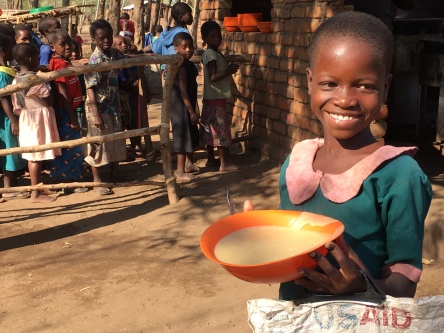IPC ACUTE FOOD INSECURITY ANALYSIS NOVEMBER 2021
OVERVIEW
In the current period of November 2021 to December 2021, about 1.4 million people (7% of the population) are estimated to be experiencing Crisis levels of acute food insecurity (IPC Phase 3) and require urgent humanitarian action to reduce food gaps, protect and restore livelihoods and prevent acute malnutrition. Around 4.4 million people are Stressed (IPC Phase 2) while 13.1 million people are food secure (IPC Phase 1). Out of all rural districts, district towns and cities analysed, 26 areas are classified in IPC Phase 2 (Stressed) while six are classified in IPC Phase 1 (Minimal). No areas are classified in IPC Phase 3 (Crisis) or IPC Phase 4 (Emergency). Out of the 1.4 million people in Crisis (IPC Phase 3), around 186,000 are from urban areas (Mzuzu, Lilongwe, Zomba and Blantyre cities), representing 8% of the urban population, whilst the remaining 1.2 million people are from the rural areas and the Bomas, representing 7% of the rural and Boma population.
Between January and March 2022, around 1.65 million (9% of the population) are projected to be in IPC Phase 3 (Crisis), 5 million people are projected to be in IPC Phase 2 (Stressed) while 12.2 million people are projected to be food secure (IPC Phase 1). Nsanje and Chikwawa are the only districts projected to be in Crisis (IPC Phase 3). The remaining areas are likely to be in IPC Phase 2 (Stressed), aside from Chitipa, Likoma, Nkhatabay and Rumphi, which are projected to be in Phase 1 (Minimal). Populations classified in Crisis (IPC Phase 3) include poor urban/Bomas and rural households in the deficit-producing southern region, and some parts of the northern and central region districts. Despite the country realising record high maize production at 46% above the five-year average, there are still some pockets in the districts and cities that are likely to face acute food insecurity. These areas experienced dry spells and later than normal tailing off of rainfall, leading to localised production shortfalls. These shortfalls were exacerbated by slow livelihood recovery from previous seasons and the impact of COVID-19 on remittances, petty trading and self-employment activities.
When comparing the October 2021 – March 2022 projection from the August 2021 analysis with the latest November – December 2021 current from the November 2021 analysis, a decrease by around 100,000 people in IPC Phase 3 (Crisis) is observed. This is mainly due to the bumper harvest and decreasing food prices, trending between 9% to 30% below the five-year average across markets, that enhance financial access to food for the vast majority of the people in this period. However, looking at the projection period - which coincides with the peak of the lean season - the latest analysis shows an increase by over 150,000 people in January and March 2022, compared to the October 2021 - March 2022 projection from the August 2021 analysis. This is mainly due to the Jan-Mar 2022 projection covering specifically the peak of the lean season as opposed to the previous expanded projection Oct-Mar, as well as prolonged dry spells, and low agricultural incomes resulting from low agricultural prices for cash crops in Kasungu and Lilongwe.


